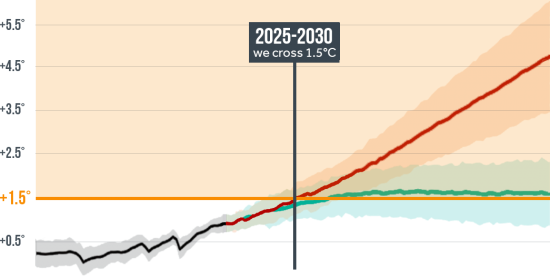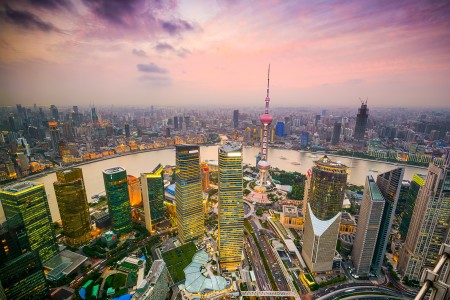April 21, 2016 – What’s the big difference between a global mean temperature rise of 1.5 versus 2.0 Celsius or the Fahrenheit equivalent 2.7 and 3.6 degrees? Think about what these numbers imply. Because these are the numbers that the Paris conference on climate change pinned to the international agreement based on best mitigation performance against IPCC projections.
A mean average rise means many days significantly hotter with the greatest extremes felt in cities where pavement and lack of forest cover exacerbate temperatures to the extreme. Even today mean temperatures, now 1.0 Celsius higher than the beginning of the Industrial Revolution, are making those places where the majority of humanity live and work, hotter and more uncomfortable.
What does a 1.5 Celsius temperature rise mean in reality?
Here are two examples. A 1.5 rise globally projects to an average rise of 4.4 Celsius (7.9 Fahrenheit) in the Arctic and 2.2 (approximately 4 Fahrenheit) in the Mediterranean basin according to the latest climate models.
What does a 2.0 Celsius temperature rise mean?
For the Arctic it translates to a rise of between 5.5 and 8 Celsius (9.9 and 14.4 Fahrenheit). And in the Mediterranean it increases average temperatures by 3.0 Celsius (5.4 Fahrenheit).
Climatologists point out that the current 1.0 Celsius rise since the Industrial Revolution has already produced temperatures 2+ Celsius higher in the Arctic just in the last 15 years.
But that is only the half of it. Consider that mean temperatures get measured over both land and ocean. So the mean temperature rise of 2 Celsius translates to land temperature rises of as much as 6 Celsius (10.8 Fahrenheit). Imagine what that mean for those heat islands, the large urban cities I mentioned above? And all we are talking about so far is temperature changes. Along with the warmth other weather related phenomena will change. Think wind, precipitation, extreme weather events, storm surges.
No climate model to date is perfect.
Projections, such as those described above, may contain error factors. And current climate models don’t anticipate “tipping points” which could dramatically exacerbate the impact of rising temperatures.
If unfamiliar with the term tipping point popularized by Malcolm Gladwell in a recent book, it refers to a point in an evolving situation that leads to a change or new equilibrium. Climate change tipping points have happened in Earth’s geological past. The most recent example is the Ice Age of geological period known as the Pleistocene which began 2 to 3 million years ago and came to an inter-glacial warming period only in the last 20,000. Some climatologists believe that the warming we have added through human activity may push any potential Ice Age recurrence into a future as much as 100,000 years away.
Today the new tipping may be happening in the Arctic as sea ice declines and Greenland glaciers experience rapid melting.
In a study published in Proceedings of the National Academy of Sciences last year, scientists identified 37 other cases of potential tipping points all happening within the 2 Celsius climate model scenario. The scientists state that the question isn’t “if these things will occur” it is more “when they will occur.” The triggers include ocean, sea ice, alpine and continental glaciers, permafrost zones and land mass flora and fauna. One that we may see sooner than later is a shut down of the existing North Atlantic Ocean circulation pattern as Arctic and Greenland ice melt cools the waters off Europe. That’s just one abrupt change that could lead to a cascade of others.
All of the above points to the fact that we may be underestimating the amount of carbon dioxide emission reductions needed to keep the planet more accommodating to our present existence as well as that of the flora and fauna. Professor Andy Pitman, Director of ARCCSS, the Australian Research Centre for Climate System Science, states, “To keep extreme temperature changes over the Mediterranean below a 2 Celsius threshold, the cumulative emissions of CO2 would have to be restricted to 600 gigatons rather than the 850 gigatons currently estimated to keep global average temperatures increase below 2 Celsius.”
The image below states “1.5 C to stay alive.” Although life here on Earth can withstand a mean average temperature rise within that limit, the truth is the quality of that life will be far different from today. Humanity is at a tipping point where procrastination will lead to unforeseen consequences because as bad as the climate models predict the future, the reality may prove to be far less palatable.
If you are reading this I encourage you to circulate the contents, to show it to political leaders and business decision makers, and to consider the role you can play in reducing the carbon emissions that are impacting our present and the near future.











